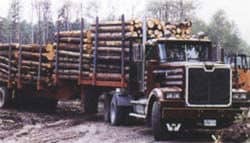Local History
In 1757, a fur trading post was established in the Hudson Bay District, beside the Red Deer River. Ruins from the post have been found near the village of Erwood. In 1790, the North West Trading Co. set up a trading post at the mouth of the Etomami River. Speculators think that a South Company’s post was set up on the opposite mouth of the River, where there are remains of a 2nd post unaccounted for.
Over the years a settlement grew and in July 1907, an application was made to erect ETOMAMI as a village. (Etomami was a native word that meant a place where 3 rivers join.) But in order to establish a hamlet, it was necessary to have fifteen occupied dwelling houses. By August, the list was completed and the village was formed. Mr. B.F. Noble was the first “overseer” of the village. The post office was also established at that time. It was located on Churchill Street approximately where the Pharmasave is now. Then in 1909 the Canadian Northern Railway Company chose the name, HUDSON BAY JUNCTION, so the name was changed.
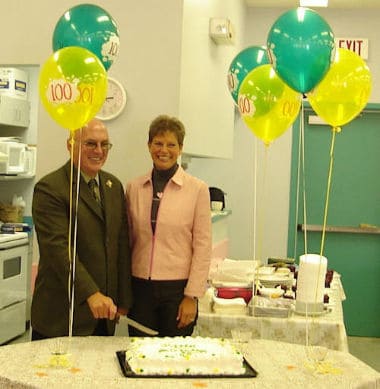
During the early years many difficulties were encountered in trying to maintain the village. It was even suggested at one time that it be disorganized! But as time moved on, things improved and the town continued to grow. The town was incorporated in 1946 and at the first council meeting, which was held in 1947, the town\’s name was shortened by dropping “Junction”. In 1958 parking meters were introduced on Churchill Street, although they have long since vanished! The year 1958 also saw the town switch to Mountain Standard Time. But less than two months later, they decided to revert back to Central Standard Time.
Today Hudson Bay is still a major junction with the railway running in three directions, and the highway running in all four directions and rivers surrounding the community. Things have changed, and have come and gone, like in any community, but the warmth, friendliness and pioneering spirit lives on. You can visit part of Hudson Bay’s history at the local Museum located on Churchill St. or at the Heritage Park located at the corner of Hwy #3 and #9.
In The News – A Tradition Of Excellence
Newspapers have been part of Hudson Bay since 1907. A small typewritten sheet named the “Junction Kicker” served the community until 1936. The paper was then sold to F. Carnahan who continued to publish it under the name “Judge”.
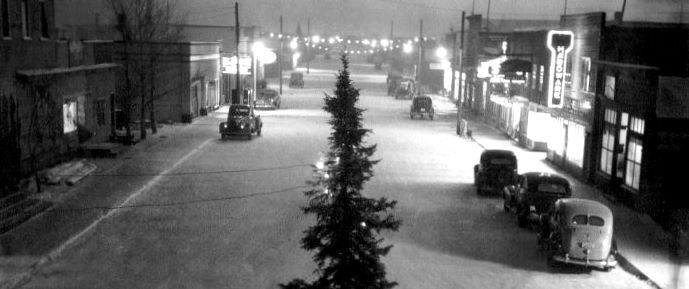
Fred joined the army in 1940 and the paper was closed. In 1946, Donald L. Hood, a local businessman, founded “The Hudson Bay Post.” He continued to publish the paper until his death in 1954. A second paper was established in the Town in 1952 and was named “The Northland Review”. This paper was short lived as it closed in 1953. In 1955, the local Board of Trade asked the Mazur brothers of Flin Flon to establish a new paper called “The Hudson Bay Post-Review”. It was decided to equip the new enterprise with a photo-offset printing system. It would be the 1st in Western Canada. Heritage Park is named after Al Mazur for his contribution to the community. Today the paper serves Hudson Bay and district and in 2006 marked the 50th anniversary of the Post-Review. As a link with the past, the Post-Review building retains a small portion of the original structure which had been built by Don Hood who was the editor from 1946-1954.
Hudson Bay’s First Plywood Manufacturing Plant
In 1948 the Hamjea Plywood Company of Hudson Bay built the first plywood plant in this area. The name was derived from a combination of the first owners initials. H. J. England, A.E. England and M.A. Rogers. It was a successful enterprise supplying the needs of builders across the country.
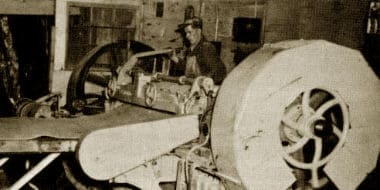
The factory was built in the northwest part of town, in the vicinity of today\’s Hamjea street. The Hamjea Plywood Company produced 40,000,000 square feet of unsanded plywood annually. At least 30 men were employed in the plant in addition to numerous contractors who cut and hauled poplar logs to the plant.
Within a year, fire devastated the plant and damage was estimated at over $65,000. The plant was rebuilt in 3 months. In 1955, lightning caused another fire which also leveled the plant. Again it was immediately rebuilt. Then in 1956, the Hamjea plant was purchased by a Toronto syndicate who were distributors for the local product. The name was retained, but on December 22, 1958 fire once again leveled the Hamjea Plywood Plant. It was never rebuilt. Plywood is no longer produced in Hudson Bay today after the mill was closed indefinitely in 2006.
Wizewood – MacMillan Bloedel – Weyerhaeuser
The decision to build a Wizewood Products Ltd. Plant in Hudson Bay was made in 1959. The plant, a joint venture of private industry and the Saskatchewan government, began production of a waferboard in September 1961. The plant\’s first general manager was J. Korodi.
In the first year of Wizewood\’s operation a large number of local people were employed in cutting poplar bolts, with 75 more working in the plant. The aspenite paneling was well received for building purposes and the demand for the product grew. In March 1962 Gerry Neumann of Regina was employed as controller at Wizewood Ltd., and Gordon Lawley of Abbotsford, B.C. took the position of plant superintendent.
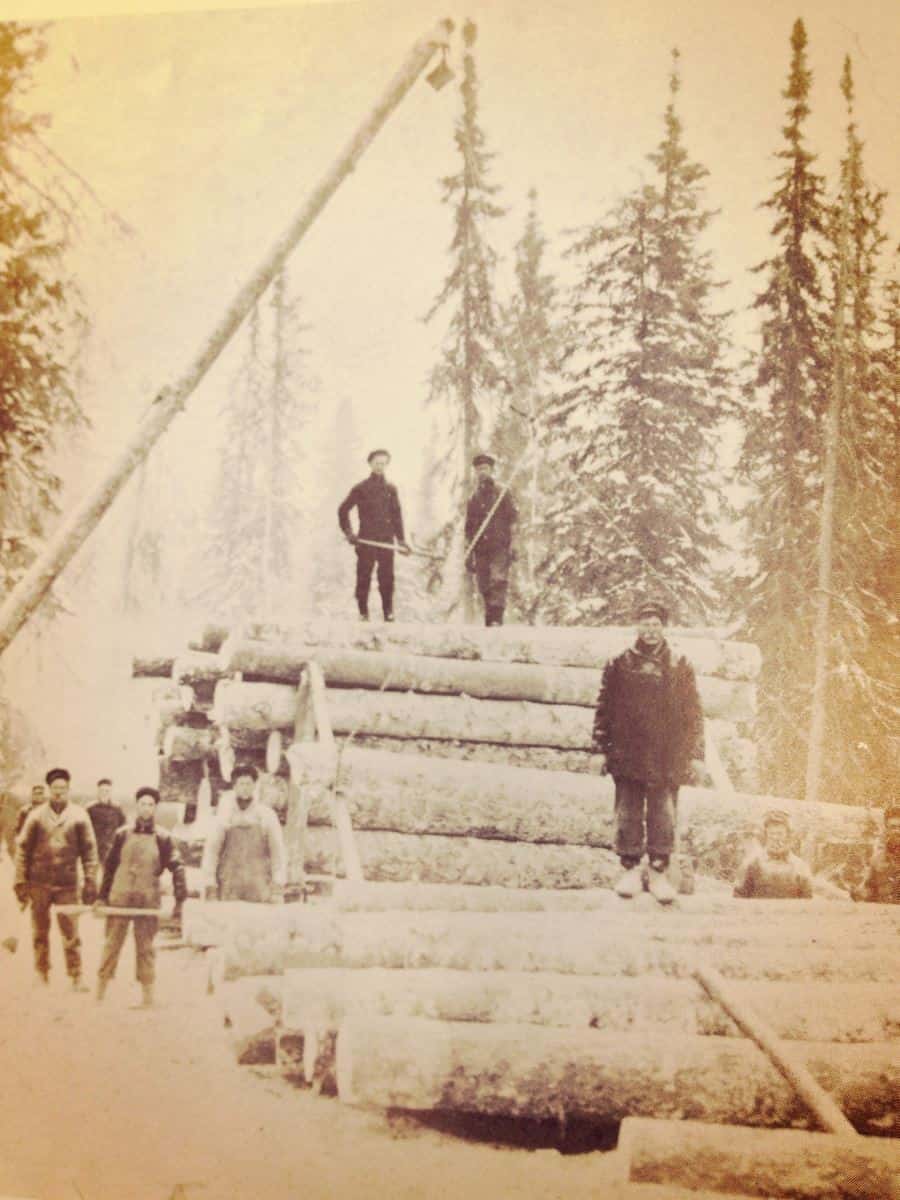
On January 2, 1963 the central portion of the Wizewood plant was damaged by fire of unknown origin. This section was rebuilt in three months and production of the waferboard proceeded.
In April, 1965 the Wizewood plant was sold to MacMillan Bloedel and Powell River Ltd., Vancouver. A change of government had taken place shortly before the sale.
The expansion of the plant in 1968-69 more than doubled the capacity in output of the particle board. About 170 persons were employed in 1966, the work force gradually increased to about 260 persons in 1981.
In April 1965, John St. Clair Ross was appointed manager of the Aspenite Division in Hudson Bay, followed by John K. Foster in January 1966. In December 1969 Don Leavitt was named plant manager.
Bill Watkins worked on construction of the Wizewood plant as a journeyman electrician from 1959. He was promoted to electrical foreman, then plant production superintendent. In 1972 he was promoted to plant manager.
In 1976 Murray Atkinson, from Nipigon, Ont. succeeded Bill Watkins. He moved to Sioux Lookout, Ont., and was succeeded by R.G. “Roy” Bondue in Nov., 1997.
John Robillard was production manager before he and his family moved to Thunder Bay in 1980.
MacMillan Bloedel played a great part in the community in areas of education, health care, recreation, etc. Reforestation is an important part of the Company\’s program, in which it took an active part. In 1999, MacMillan Bloedel sold to Weyerhaeuser Ltd.
The Historical Timber Industry- Key to Town’s Development
Hudson Bay was named “Forest Capital of Canada” in 1979 by the Canadian Forestry Association. Forestry and the lumber industry were vital components to the economic health and development of the Town of Hudson Bay. At this time there were three large mills accounting for the bulk of the town’s industry:
MacMillan Bloedel- manufactured Aspenite Waferboard, directly employing about 140 people. The mill purchased in 1965 by MacMillan Bloedel and Powell River Ltd. and was sold in 1999.
Simpson Timber- produced stud lumber products. The modern mill was completed in 1965, directly employing 215 people. The mill closed in 1990.
Saskatchewan Forest Products- manufactured Plywood and directly employed 175 people. The mill was sold to Weyerhaeuser in 1999 and closed indefinitely in 2006. C&C Wood Products purchased the mill in 2009.
Weyerhaeuser built a new mill in 2000, the Weyerhaeuser OSB 2000 mill was temporarily closed from 2008-2010. It is now currently operating in the community, employing more than 150 people.
Newspaper Articles On Hudson Bay’s Forest Industry
Click here to read newspaper articles about the history of Hudson Bay’s Forest Industry dating as far back as 1959.
